Mid Travel vs Long Travel Suspension Explained
If you’ve been researching ways to get better suspension performance from your truck or 4x4 equipped with independent front suspension (IFS), you may have come across the terms “mid travel” and “long travel” along the way. Aftermarket suspension manufacturers are offering mid and long travel kits for many popular IFS vehicles, such as the Toyota Tacoma, 4Runner, Tundra, Ford F-150, Ranger, and Raptor, and Chevy Colorado and Silverado platforms. But what’s the difference between these kits, and more importantly, which do you need for your rig? In this article, we’re diving deep into the world of off-road suspension performance to answer these questions, and give you the information you need to make an informed decision when it comes time to order your new kit.
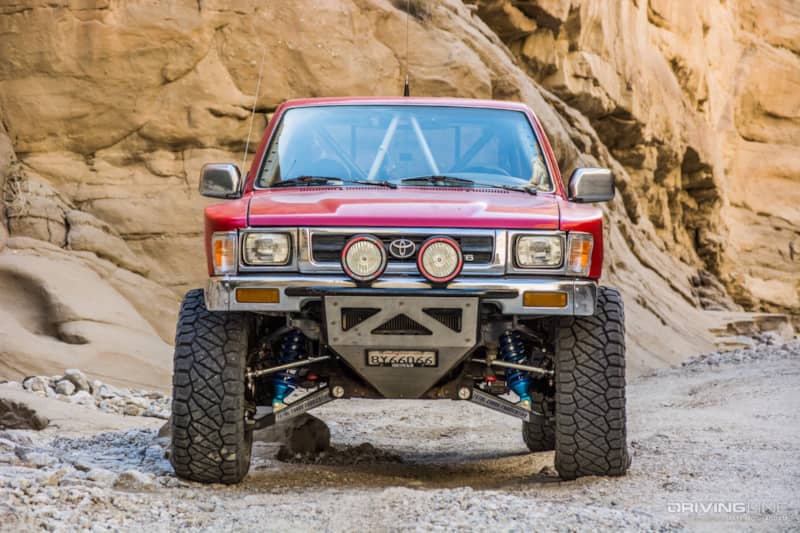
What is IFS and how does it work?
Before we get to comparing the different types of kits out there, it’s important to understand what exactly an IFS system is and what it’s made of. IFS, or independent front suspension, refers to any front suspension design that allows each wheel to move in its travel path independently of the others. If you’re interested in the differences between IFS and a solid front axle check out this article explaining that topic further.

Most modern IFS systems use the same basic components. An upper control arm (UCA), lower control arm (LCA), a spindle (sometimes called a knuckle), a shock (often a strut or coilover), and a steering tie rod. Additionally, most 4x4 IFS vehicles also have an axle shaft with constant velocity (or CV) joints, to drive the front wheels. We’ll get back to why that’s important later in this article. While nearly every IFS car and truck out there shares these basic components, where they are mounted along the vehicle’s frame, their dimensions, shape, design, and the materials they’re manufactured with can vary.
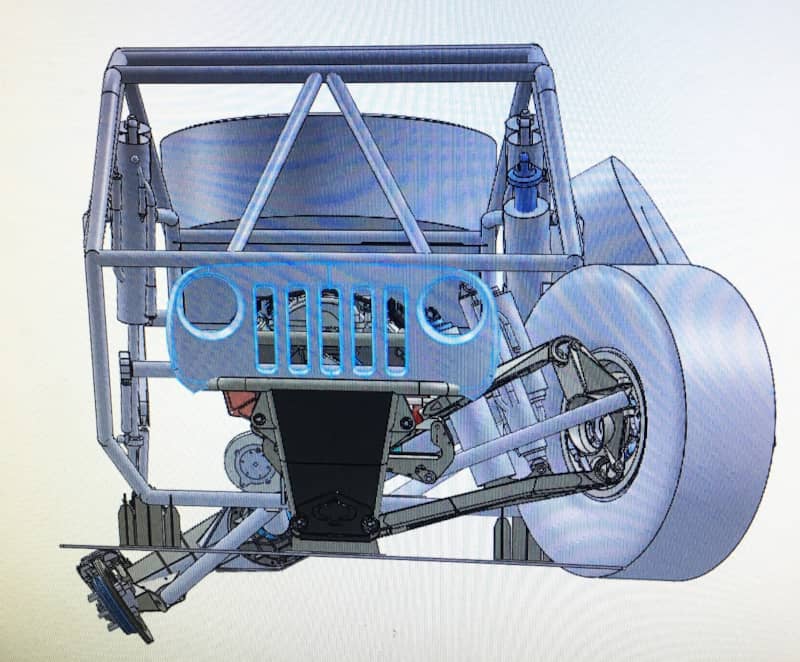
What is suspension travel?
One of the hottest buzzwords thrown around in the off-road suspension world is “travel”. Normally measured in inches, how much “travel” a vehicle’s suspension has refers to the distance between the center of the wheel from full extension to full compression of the suspension. Basically, it’s how many inches your wheel can move up and down. The more travel in the suspension, the more time your shocks have to “dampen” or react to the terrain, thus transferring less of that harshness to you and your passengers, giving you a smoother, more controlled ride.
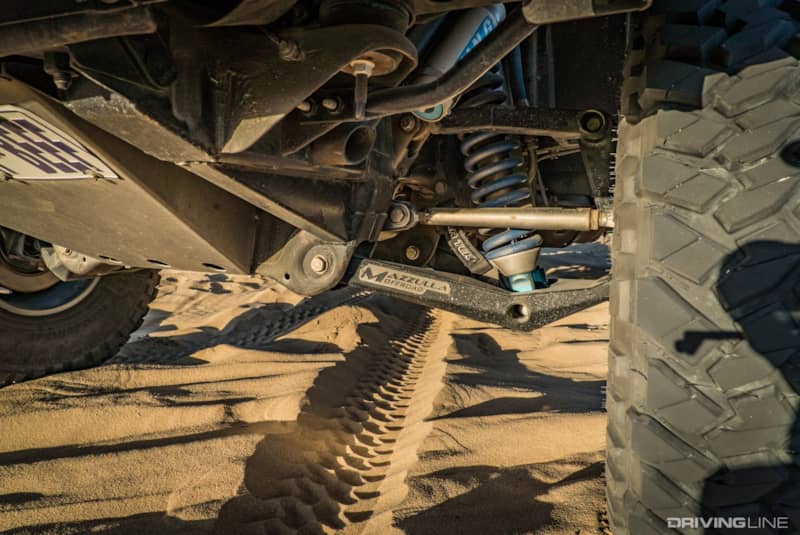
Travel numbers are often used as an indicator of suspension performance, so auto manufacturers and aftermarket suspension companies are always boasting about how much travel you can gain by buying their products. After all, the more travel, the better your suspension will work in unforgiving terrain, right? Well, not always. But we’ll dive into why bigger travel numbers don’t always equate to a better ride in the dirt later on.
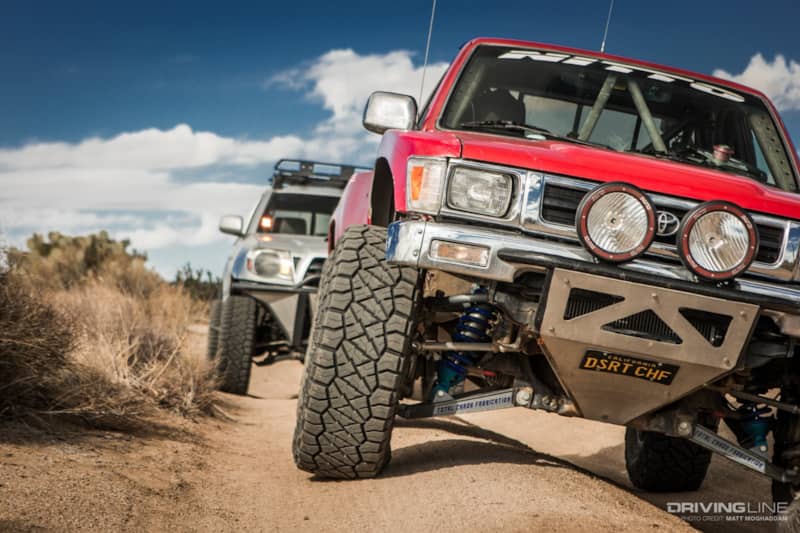
What is Mid Travel?
If you’ve been looking at different suspension options for your IFS vehicle, you’ve probably read or heard about mid travel kits. Enthusiasts, off-road shops and forum-members can all agree that a solid mid travel suspension kit will yield much better off-road performance than a simple lift or leveling kit, and will even drive smoother on the highway. But what exactly constitutes mid travel? What components does it consist of, and how does it benefit you over a stock suspension kit.
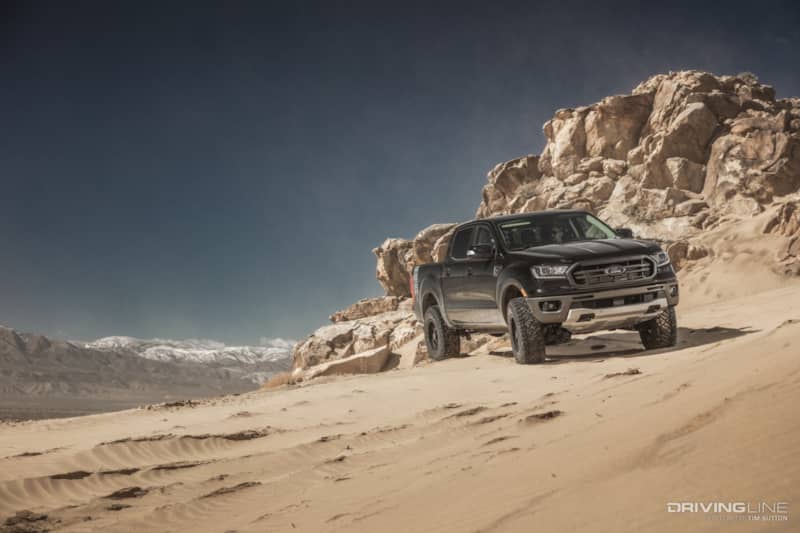
To make matters more confusing, there’s no real consensus among aftermarket suspension manufactures and off-road enthusiasts on what the actual definition of “mid travel” is. But looking at the majority of suspension packages that fall under the mid travel umbrella, there are some common parts that most would agree are the crucial components to a mid travel kit.
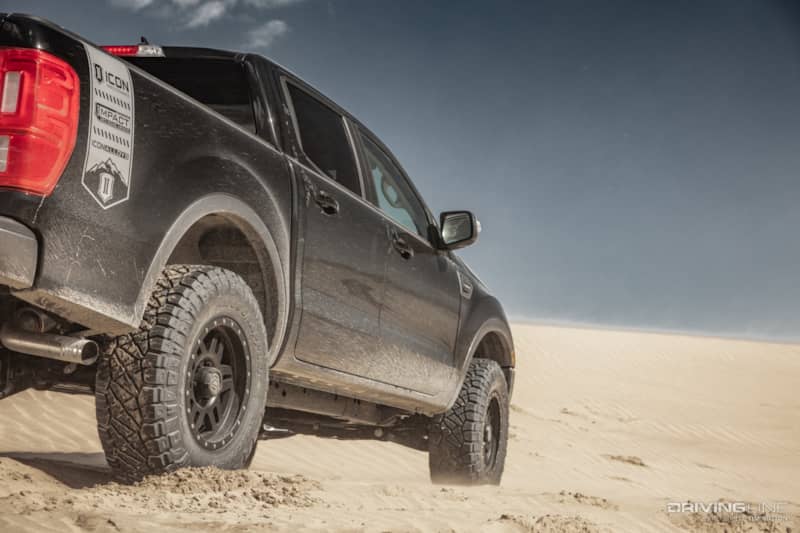
Typically, a mid travel kit consists of a two main components: stock-length aftermarket UCA’s with a stronger ball joint or steel uniball, and aftermarket coilover shocks. Many aftermarket shock companies such as Fox, King, and Icon will offer an “extended-travel” coilover option, giving you an inch or so extra suspension travel. Some suspension companies offer a stock-length replacement LCA that features a stronger ball joint or uniball as well, but this is not crucial to the suspension performance.
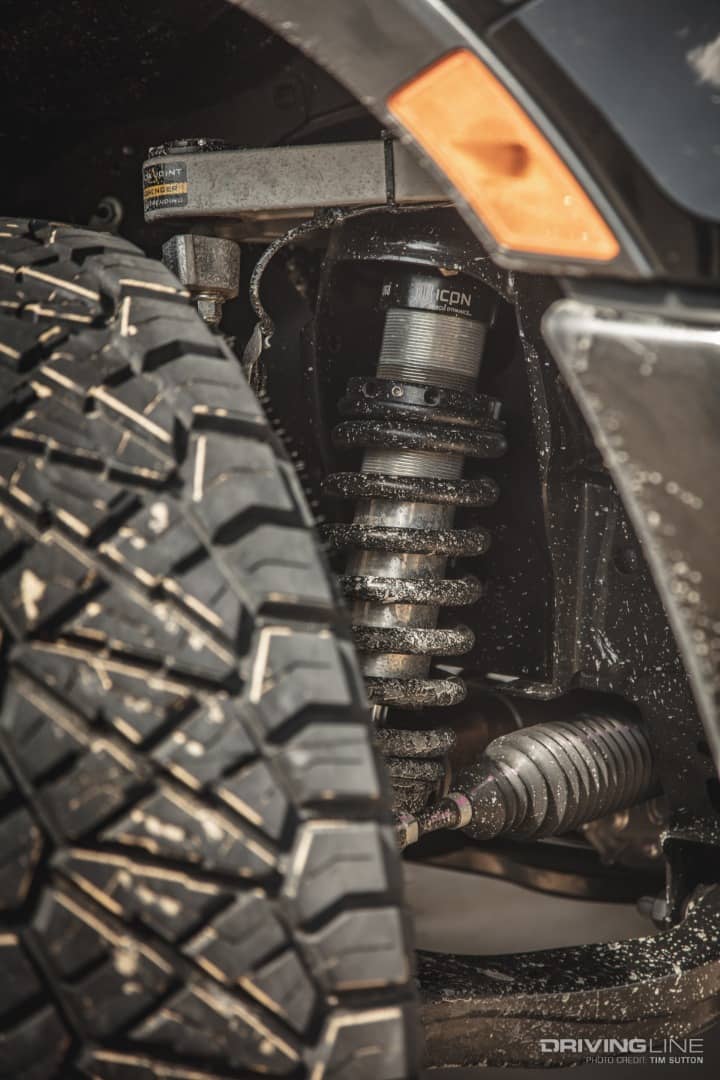
Mid travel kits will typically give you a notable increase in overall suspension travel, but due to so many variances between platforms, there’s no defined amount of increase. Suspension manufacturer’s will sometimes provide travel increase numbers for their products, so it may be worth it to you to obtain that information from them directly. And while a stout mid travel setup will perform far better than any stock suspension system in the dirt, it’s safe to assume that you won’t be doubling your suspension travel with just a mid travel kit.
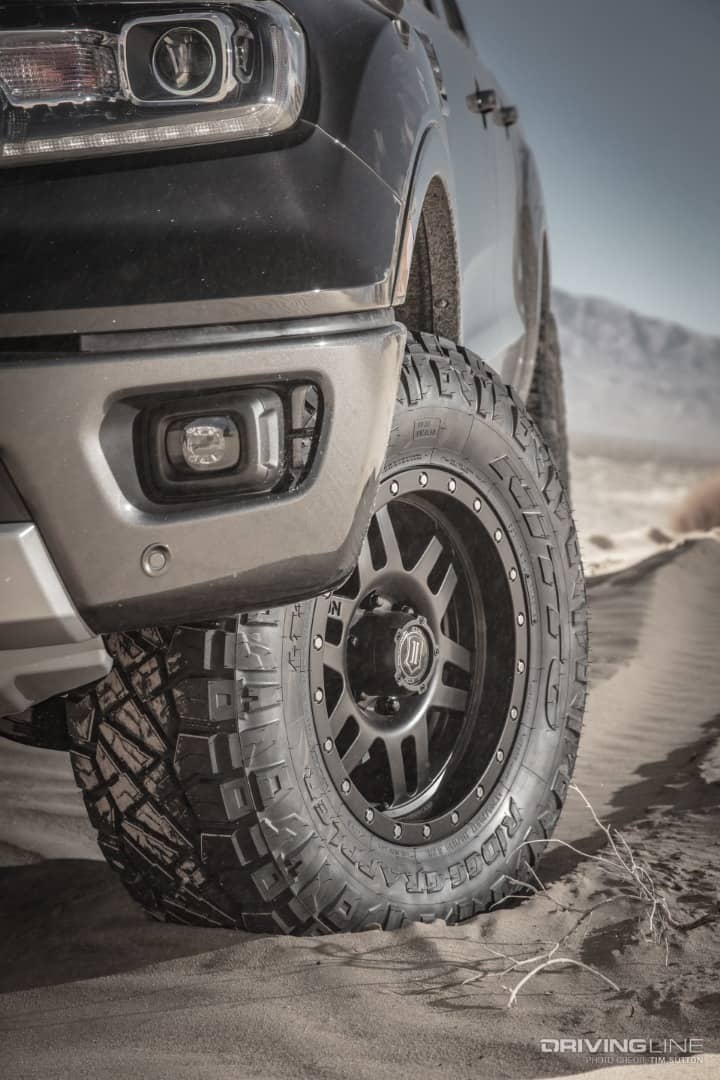
What is Long Travel?
Now that we’ve loosely defined what a mid travel kit is, let’s define what makes up a long travel kit. Again, many enthusiasts over the years have debated the very definition of what makes a long travel kit. Some argue a kit is only called long travel if the upper mounting position of the shock has been moved up to allow for longer shocks. Others say as long as it’s got wider control arms and thus a wider track width, it’s considered long travel. But one thing is certain. Long travel kits are at the upper end of suspension modification, and basically the last stop for bolt-on performance parts. Anything more wild will typically require extensive fabrication work, therefore permanently modifying your vehicle’s frame, which is a step too far for most modern off-road enthusiasts.
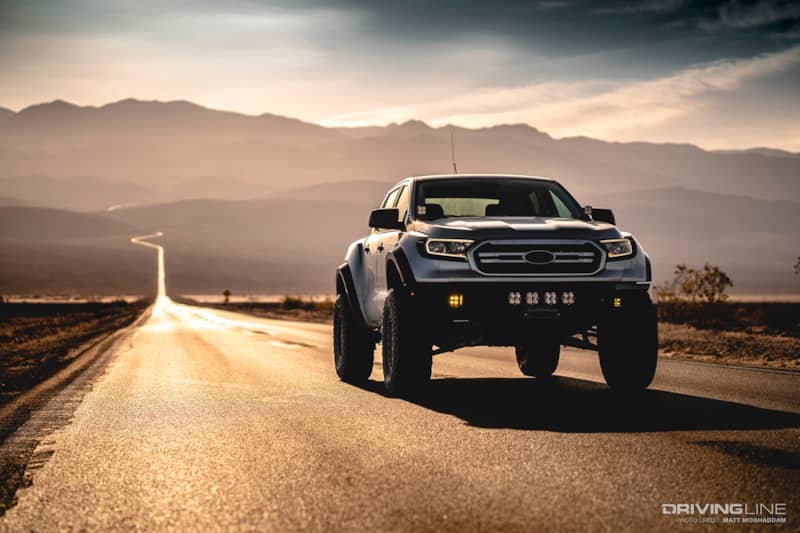
In comparison to mid travel, long travel kits have quite a bit more to them. The basic components of a long travel kit are as follows: extended-length UCA’s, extended-length LCA’s, extended-length steering tie rods, extended-length CV axle shafts, extended-length brake lines, aftermarket bump stops or bump stop extensions, limiting straps, and a kit-specific aftermarket coilover shock. Typically, long travel suspension systems ditch the typical upper and lower ball joints for stronger steel uniballs, and have other options such as secondary bypass shocks for extra tunability and more damping performance. Some manufacturers will also include a stronger spindle in their long travel kits as well.
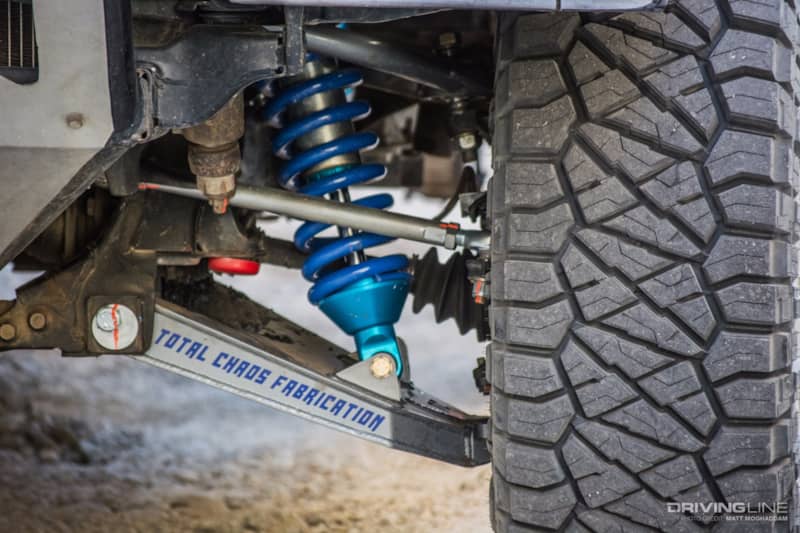
As you can see, long travel kits are much more involved. Almost every major component of the front suspension is being replaced with an aftermarket part, designed and engineered to take more abuse off the pavement. But the benefits are clear. Long travel kits are the cream of the crop for off-road IFS systems, and easily attainable for most enthusiasts. But what’s the real difference between mid travel and long travel, and is it worth it to go all-out?
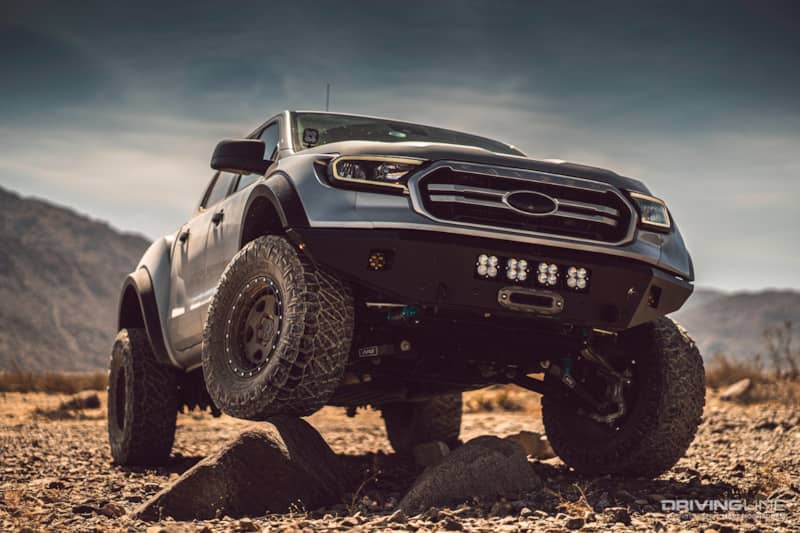
What’s the Difference?
-Performance
As we’ve established already, long travel suspension will undoubtedly outperform mid travel in rough terrain such as fast desert trails and situations where more articulation is required. There are several performance advantages of a long travel kit when compared to a mid travel kit. The increased track width provides means the vehicle has a wider stance, therefore giving it more stability overall. With the wheels sitting further out, there’s more room to articulate the suspension up and down without interfering with components such as the firewall and frame. Often times, long travel systems will provide more steering angle as well. The components in long travel kits replace most of the OEM suspension with much heavier duty counterparts, such as steel uniballs and polyurethane bushings.
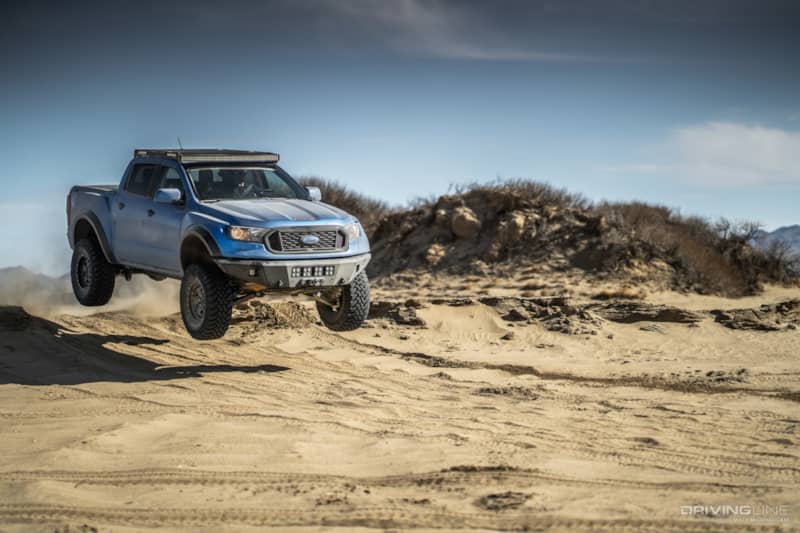
And then there’s the comparison of actual travel numbers themselves. Let’s use an example of a 3rd generation Toyota Tacoma. Most mid travel systems for this platform will net around 10 inches of suspension travel with just an aftermarket UCA and coilover. Most long travel systems for this platform will net 13 inches or more of suspension travel. And depending on the components, some can attain as much as 18 inches of travel, all while retaining four wheel drive. And since we’ve already established that more travel does allow for the suspension to react to the terrain better, and keep the truck far more stable and safe at higher speeds through the bigger bumps and holes, it’s safe to say that the net travel increase from a mid travel to long travel suspension system is significant. It can mean the difference between goin 10 miles per hour over two-foot whoops and skipping over the tops of them at 50+ miles per hour.
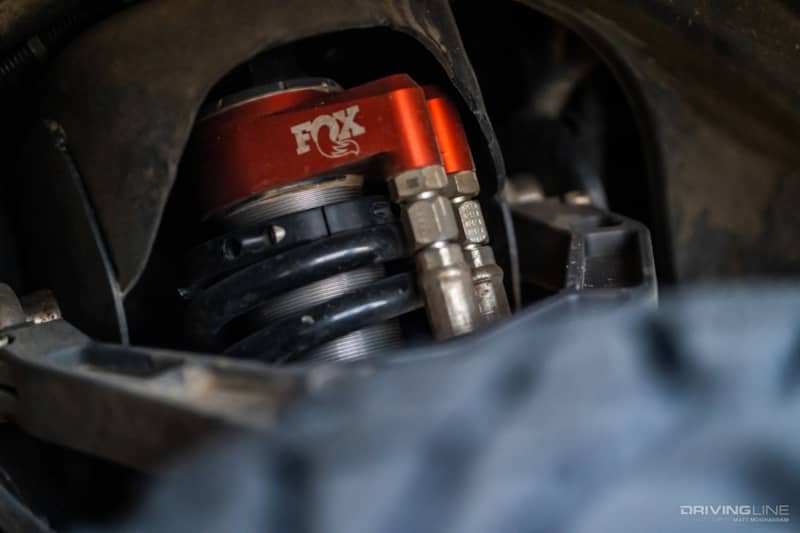
Supporting Modifications
Here’s where the real kicker is. The beauty of mid travel suspension is in its simplicity, and too often overlooked. Upper control arms, and upgraded coilovers. That’s all you need for a stout mid travel system to take on the vast majority of off-road trails out there. Some would argue that adjusting the coilovers for a lift so you can fit larger tires is a requirement as well, but that’s not the case. A mid travel suspension system will perform just as well stock size all-terrain tires and OEM wheels at stock ride height. Sure it’ll make obstacles a bit more difficult to climb over, and you’ll need to be mindful of ground clearance, but the ride itself does not change if you opt to lift it and increase the tire size. Mid travel really doesn’t require any other supporting modifications to work correctly.
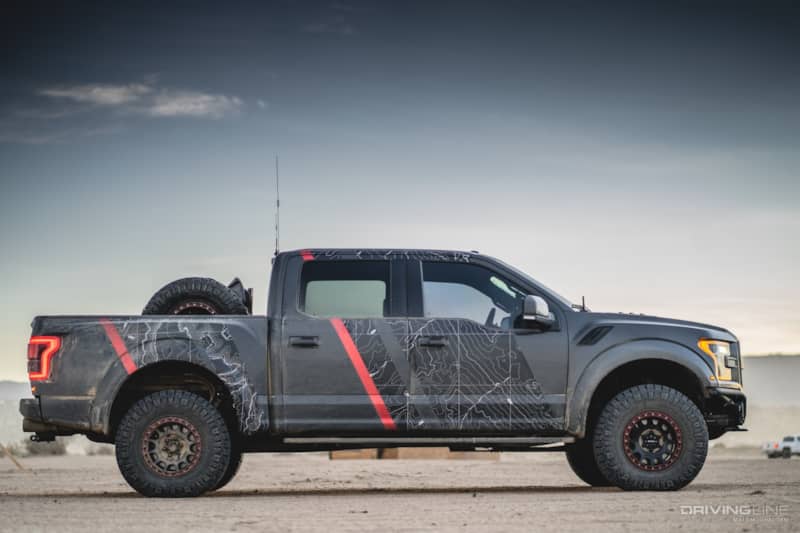
Long travel suspension, however, does require supporting mods. For starters, most long travel suspension kits increase the vehicle’s track width by several inches. In the case of the Toyota Tacoma from above, the track width is increased a full 7 inches over stock. That means each wheel is now sitting 3.5 inches outside the wheel wells, and therefore require wide-body fenders. That means you’ll need to order some fiberglass fenders at the minimum, and you’ll likely want to order the rear bedsides to match as well, before having them installed, prepped, and painted to match the truck. But simply swapping out the fenders doesn’t solve all your issues. Your OEM front bumper will not match the wider fiberglass fenders, and most aftermarket bolt-on front bumpers are designed for stock-width trucks and SUVs. So there’s a good chance you’ll need to have a custom, wider bumper fabricated to match the new width of your vehicle.
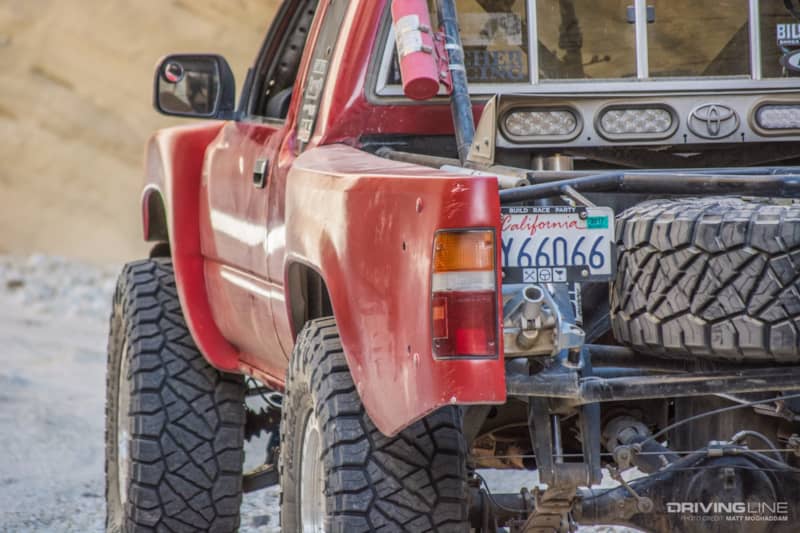
Additionally, many aftermarket long travel systems require a specific wheel backspacing, so you might have to swap your wheels if you’re still on the stock ones. And with those new wheels comes a bigger tire size. It’s rare to see any truck or SUV running a long travel system on stock tires. And after all, you’ll want the biggest tire you can fit on your rig to make the most use of your new suspension. And depending on how you plan on driving your rig, or what kind of trail riding you want to do, it’s a good idea to buy and install components, known as gussets, to reinforce areas of high load on your chassis. Control arm pivots, stock spindles, and steering rack bushings see far greater loads on them with long travel suspension, simply due to the increased leverage of having a much wider track width. So these weld-on gussets aren’t a bad idea, if you don’t mind permanently modifying your vehicle’s frame.
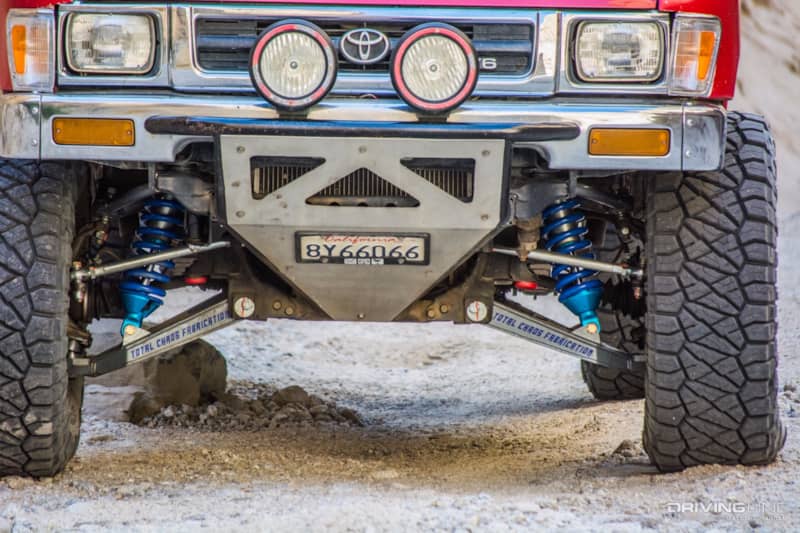
Cost
Here’s where some of you might be making your final decision. Off-road vehicle modifications are very often cost-driven decisions, and suspension systems are no exception. There’s a drastic difference in cost between mid travel and long travel suspension, especially when considering the host of supporting modifications you’ll need to get the most from your long travel rig. A modest mid-travel suspension system will set you back between $1,800 to $2,500 for most modern platforms. Considering the huge jump in performance over stock, this isn’t really a big bullet to bite in the grand scheme of building a truck. On the other hand, a long travel suspension system including coilovers will likely run you into the $5,000 or more range, for many of today’s popular truck and SUV applications. And that’s not including all those supporting mods such as fiberglass fenders, gussets, wheels and tires.
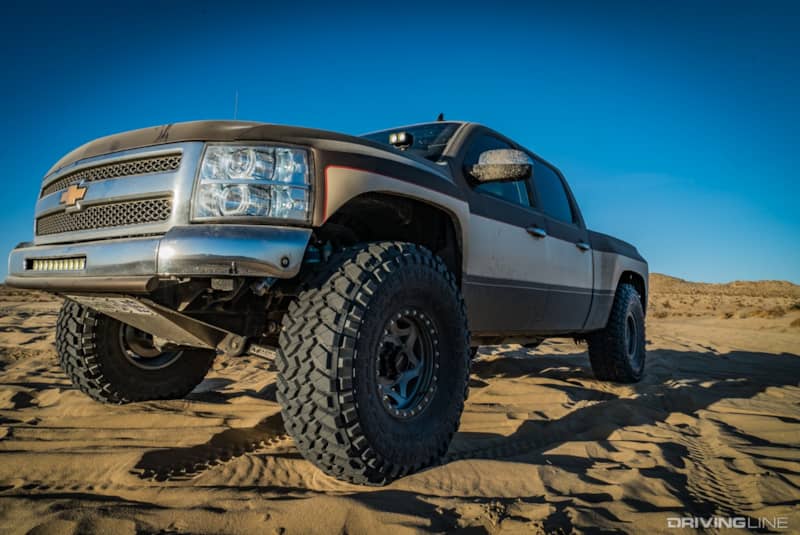
Lastly, consider the cost of installation if you don’t plan on doing it yourself. Mid travel systems can be installed in a single day for most shops, usually in about four to five hours. Long travel systems often have a estimated shop installation time of 18 hours or more. Considering what your local 4x4 speciality shop’s hourly rate is, the installation cost alone can be a decision-making factor.
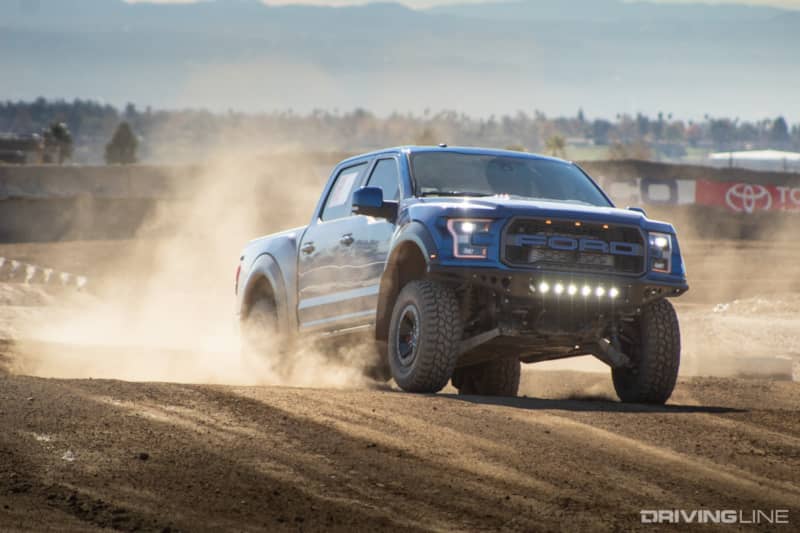
Do Travel Numbers Really Matter?
It’s important to note, however, that the amount of travel your suspension has doesn’t directly correlate to how it will ride off-road. It’s been proven time and time again that no amount of travel will ever outrun bad shock tuning. In fact, a properly tuned mid travel suspension system will likely drive smoother and perform better than a long travel system on the same truck with incorrectly tuned shocks. The valving changes that can be made to aftermarket coilovers can make all the difference in the world when it comes to your vehicle’s handling of rough terrain. And shocks are never “one size fits all”. A good shock tuner will consider your driving style as one of the most important indicators of how to tune your vehicle. So no matter which suspension system you decide on, it’s a wise investment to get your shocks tuned and make the most of the travel it’s making.
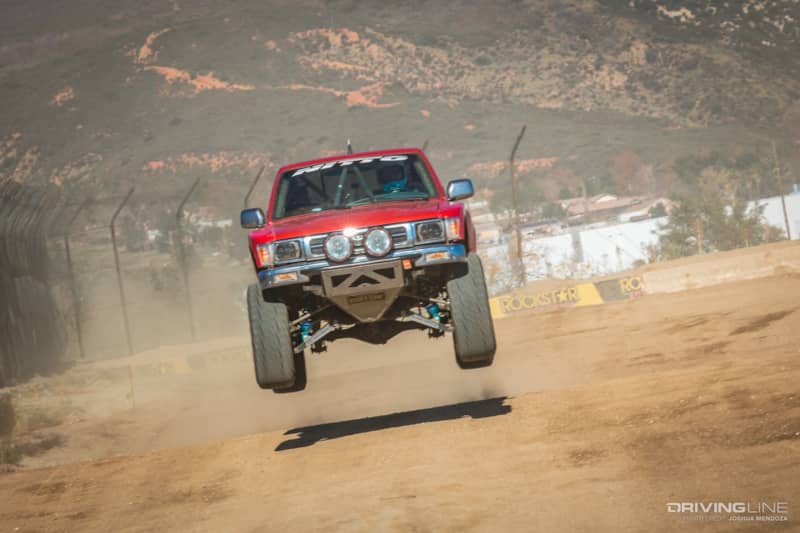
Which Kit Do I Need?
Deciding between mid travel and long travel will come down to several factors. How aggressively do you want to drive? What kind of terrain do you want to drive in? How much are you willing to spend? Are you installing it yourself? Are you willing to do body work and paint, and possibly even permanently modifying your vehicle’s frame by welding to it? These questions will help you determine if mid travel is enough for your needs, or if you really want to get the absolute most from your IFS truck’s suspension.
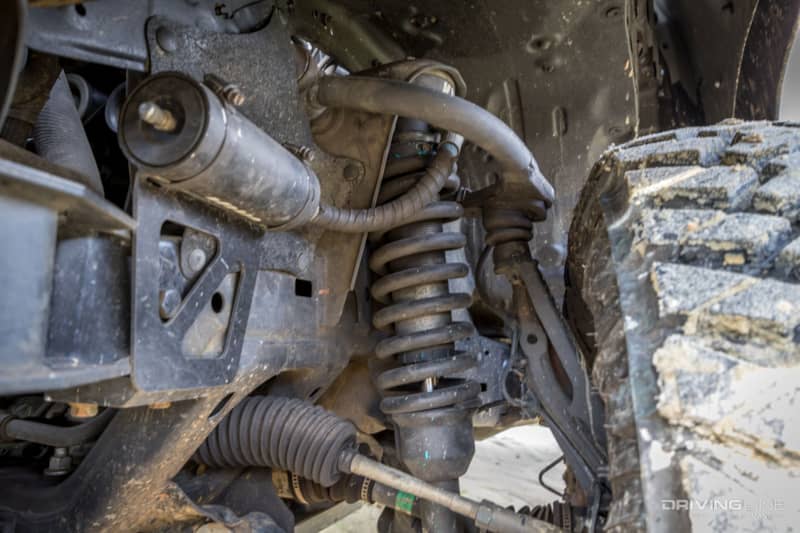
One last thing to keep in mind: In the years of our travels and trail runs, there’s never been a single time when long travel suspension was a requirement. Long travel has actually hindered trucks on tighter trails, and led to body damage from the wider fenders. And while a mid travel truck can traverse any stretch of wide open desert trail just the same as a long travel truck, having that extra travel with well tuned shocks, and the confidence of aftermarket parts that are engineered for abuse makes for a thrilling experience that can’t be matched.











